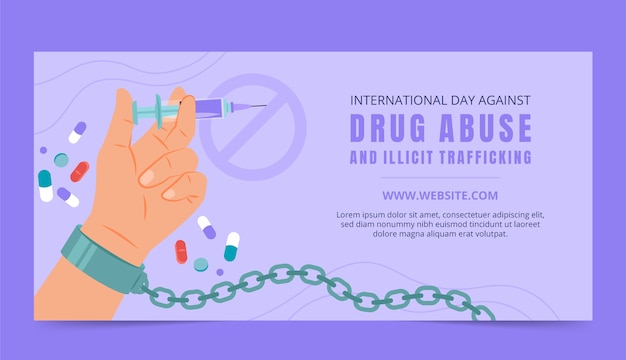
The harmful consequences of drug abuse and addiction extend well beyond the individuals using the substances. For users, the risks include long-term physical and mental health issues, as well as social problems like losing their jobs or breaking the law. Unfortunately, the impact doesn’t stop there. Friends, family, and even strangers often face difficulties due to the changes in behavior caused by substance dependency. For loved ones, this can mean financial strain as addicts beg, borrow, or steal money to fund their habits, and relationships often deteriorate when users become challenging to be around. Strangers are sometimes affected too, falling victim to crimes committed by those desperate for money to buy drugs or under the influence of substances.
Spotting drug addiction early on can make a big difference, significantly improving the chances of successful rehabilitation. Recognizing the signs is crucial, but denial often stands in the way—users might try to downplay or hide their symptoms, making the problem harder to address.
### Identifying Addiction: Signs to Look Out For
#### Self-Awareness
Drug users themselves might notice certain warning signs indicating they’re becoming addicted. These signs include:
– **Increased tolerance**: Over time, the body adjusts to regular drug use, requiring more of the substance to achieve the same effects.
– **Withdrawal symptoms**: Going without the drug for an extended period can lead to physical and mental discomfort, including nausea, anxiety, shakiness, insomnia, and feelings of depression. These symptoms typically subside only with further use of the drug.
– **Loss of control**: This involves continued use of the substance despite clear negative impacts on health and lifestyle, such as neglecting friends, hobbies, and responsibilities, coupled with a sense of helplessness in stopping use.
#### For Friends and Family
Loved ones can also look for certain behavioral, physical, and psychological signs that might indicate a problem. These symptoms generally apply across many commonly abused substances but can sometimes vary depending on the drug.
**Behavioral Signs**
– **Decline in school or work performance**: A sudden drop in attendance, motivation, or output at work or school often accompanies drug use.
– **Money issues**: Drug habits are expensive, and users may find themselves borrowing or stealing money to sustain their addiction. Items from the home may even go missing and be sold for cash.
– **Changes in social circles or hobbies**: Addicts often become secretive and may distance themselves from friends, family, or previously enjoyed activities. They may instead gravitate toward a new group of peers associated with substance use.
– **Shift in daily routines**: Eating and sleeping habits are often disrupted, with users cycling between excessive energy and extreme lethargy.
**Physical Signs**
– **Eyes**: Bloodshot eyes, unusual pupil dilation or contraction, glassy or watery appearances, and a vacant expression can hint at substance abuse.
– **Impaired coordination and speech**: Addicts frequently experience difficulty functioning normally, evident through slurred speech or unsteady movements. Shaking can also occur when the body craves the drug.
– **Neglected appearance**: Sudden weight gain or loss, unkempt grooming, and unusual odors are common physical indicators.
**Psychological Signs**
– **Mood swings**: Frequent, unpredictable changes in mood, along with feelings of anger, frustration, or heightened anxiety, often accompany addiction.
– **Personality changes**: Certain drugs can alter brain function, leading to noticeable shifts in temperament or behavior. Efforts to hide the addiction can also make users more withdrawn or secretive.
– **Lack of motivation**: Substance abuse typically results in diminished drive and awareness of surroundings.
– **Hyperactivity or fearfulness**: Addicts might alternate between bursts of activity and apparent anxiety over no discernible cause.
### Drug-Specific Symptoms
While many of the above signs are general, specific drugs often have unique effects that can make identification easier.
– **Stimulants** (e.g., cocaine, methamphetamines): Users may display dilated pupils, hyperactivity, a sense of euphoria, and increases in heart rate, blood pressure, and body temperature. As the drug wears off, they might experience depression or heightened anxiety. Long-term effects can include weight loss, insomnia, and for those who snort drugs, damage to nasal passages.
– **Depressants** (e.g., Valium, barbiturates): Abusing these substances often leads to confusion, poor coordination, slurred speech, memory loss, drowsiness, and depression over time.
– **Marijuana**: Dependence on marijuana stems from a psychological desire rather than a physical one. Addicts may show red eyes, slower reaction times, poor concentration, increased appetite, and reduced coordination. Regular use can also raise blood pressure and heart rate.
– **Opioids** (e.g., heroin, codeine, methadone): These drugs typically cause sedation, reduced sensitivity to pain, depression, confusion, and constipation. Injecting users may exhibit visible needle marks.
– **Hallucinogens** (e.g., LSD, PCP): These drugs can cause vivid hallucinations, panic attacks, flashbacks, and sometimes aggressive behavior. Users may also experience euphoria, appetite loss, and paranoia.
### Recognizing Addiction in Teenagers
Spotting drug abuse in teens can be especially challenging because typical adolescent behavior—moodiness, rebellion, or irritability—can resemble the signs of substance use. However, certain changes can signal a deeper problem, such as falling grades, skipping school, sudden secretiveness, neglect of personal hygiene, or withdrawal from friends and family.
Knowing what signs to look for and addressing concerns early can play a critical role in helping someone struggling with drug addiction. Understanding the symptoms can lead to earlier intervention, improving the odds of recovery and minimizing the damaging ripple effects on everyone involved.